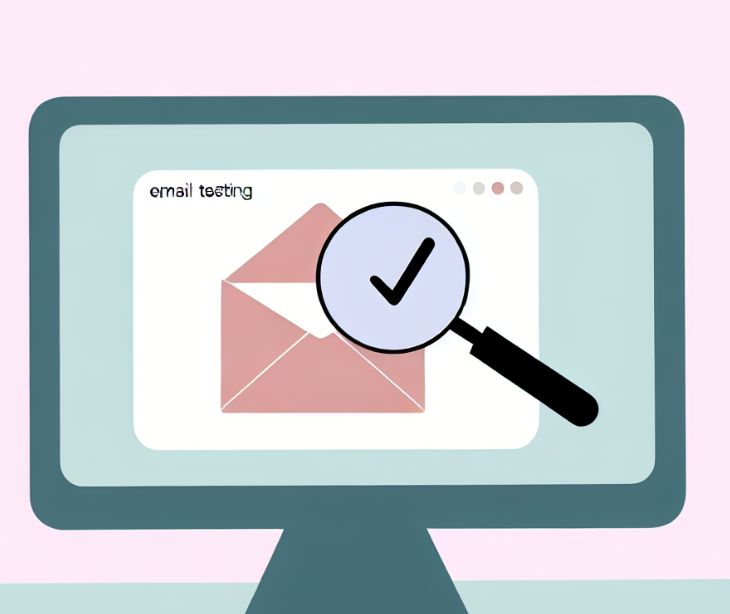
Creating an email A/B test can be divided into three aspects: deciding which part of the email to assess, how to set up the A/B test with compliance in mind, and lastly, its execution and analysis. When taking the time to consider each step carefully, organizations, especially in the healthcare sector, can create a well-rounded and effective A/B test.
What is the purpose of an A/B test?
An A/B test, also known as a split test, is a method used to evaluate and compare two versions of a digital asset—like a marketing email—to identify which one performs better in terms of specific metrics such as user engagement, conversion rates, or click-through rates.
According to a Frontiers in Artificial Intelligence study: “...the evaluation of user interaction with companies' websites and personalization effects remains an elusive goal for organizations. Online controlled experiments (A/B tests) are one of the most commonly known and used techniques for this online evaluation.”
During the test, the original version (A) and a modified version (B) are shown to different subsets of users simultaneously. This comparison helps to eliminate variations in user behavior that could be caused by external factors like time of day or day of the week.
The main purpose of A/B testing is to make data-backed decisions about changes to a product or strategy. For example, they might test two different headlines to see which one leads to more newsletter signups.
See also: Predictive modeling and HIPAA compliant email
Choose what to test
Organizations should carefully consider what is being tested in an A/B test because the choice of test variable directly influences both the test's effectiveness and the applicability of the results. Selecting the right element to test ensures that the test focuses on areas with the potential impact on user behavior and business outcomes.
For example, testing a minor change in font color might not yield as valuable insights as testing different calls to action, which can directly influence conversion rates. The way a test is structured—such as how distinctly different the variants are and the size of the test audience—can affect the reliability and clarity of the results.
Primary areas to test include:
- Subject lines: The subject line is often the first impression your email makes. Testing different subject lines can show you which words, lengths, or styles (such as using emojis or personalization tokens) are more effective at catching attention and enticing recipients to open the email.
- Sender name/Email address: Changing the sender's name or email address can help you understand the impact of sender identity on recipient trust and open rates. For instance, using a personal name vs. a company name, or a specific contact within the company vs. a general info address, might influence how recipients perceive the email’s relevance and authenticity.
Set up your A/B test
The ideal setup for an email A/B test involves selecting a single variable to change, such as the subject line, and keeping all other elements of the emails constant. This way, any difference in performance between the two versions can be directly attributed to the change made.
You should also make sure that the sample sizes for each group are statistically necessary to draw reliable conclusions. Equally distributing your email list into two groups randomly ensures that each segment is representative of your overall audience, minimizing bias.
To set up an A/B email test, follow these steps:
- Choose your variable: Decide on one specific element to test, like the subject line, sender name, or call to action.
- Create two variants: Develop two versions of your email—one with the original version of the element and one with a modified version.
- Segment your audience: Randomly split your email list into two roughly equal groups to ensure each group is a good mix of your total audience.
- Send and monitor: Send version A to one group and version B to the other at the same time to control for timing effects.
- Analyze results: After a predetermined period, analyze metrics such as open rates, click-through rates, and conversion rates to determine which version performed better.
Collecting and analyzing the results
When they conduct these tests, particularly with emails that may contain sensitive health information, the security of data collection processes is paramount. After sending out the two versions of the email, they must gather performance metrics, such as how many recipients opened the email or clicked on links. This data collection should be done through secure channels that prevent unauthorized access and ensure data integrity.
Once the data is collected, healthcare organizations analyze it to discern subtle differences in how the two email versions performed. The goal is not merely to identify which email had higher engagement rates but to understand why.
They look at factors like the clarity of the message, the immediate relevance of the content to the recipient, and how the timing of the email affects patient response. This analysis helps them to fine-tune their communication strategies.
How to create a HIPAA compliant email A/B test:
- Make sure to use a HIPAA compliant email marketing service.
- Only include protected health information (PHI) in emails when necessary, and keep it to a minimum.
- Get consent from patients before sending them emails that might involve their PHI.
- Regularly check and update your email procedures and tools to make sure they continue to protect patient information.
- Set up strict rules about who in your organization can access patient data used in email campaigns.
- Have a plan ready for quickly dealing with any leaks or unauthorized access to patient information.
See also: Top 12 HIPAA compliant email services
FAQs
What is an A/B test?
An A/B test is a method where two versions of a webpage or email are compared to determine which one performs better in achieving desired outcomes.
Are there any other tests with similar effectiveness to A/B tests?
Yes, multivariate testing and split URL testing are other methods similar in effectiveness to A/B tests
What are the email metrics to be aware of?
Key email metrics to be aware of include open rate, click-through rate, conversion rate, and bounce rate.
Subscribe to Paubox Weekly
Every Friday we'll bring you the most important news from Paubox. Our aim is to make you smarter, faster.




